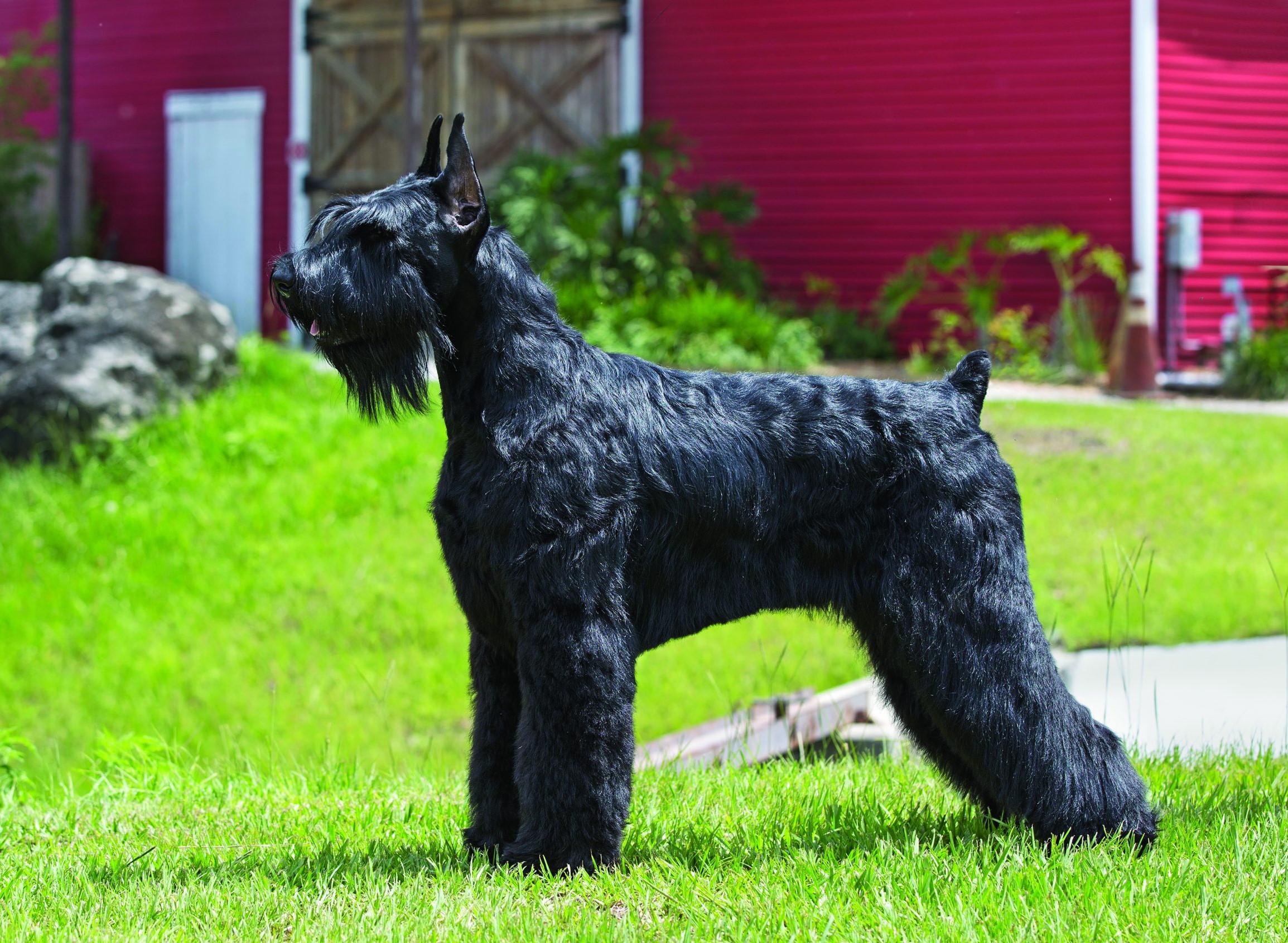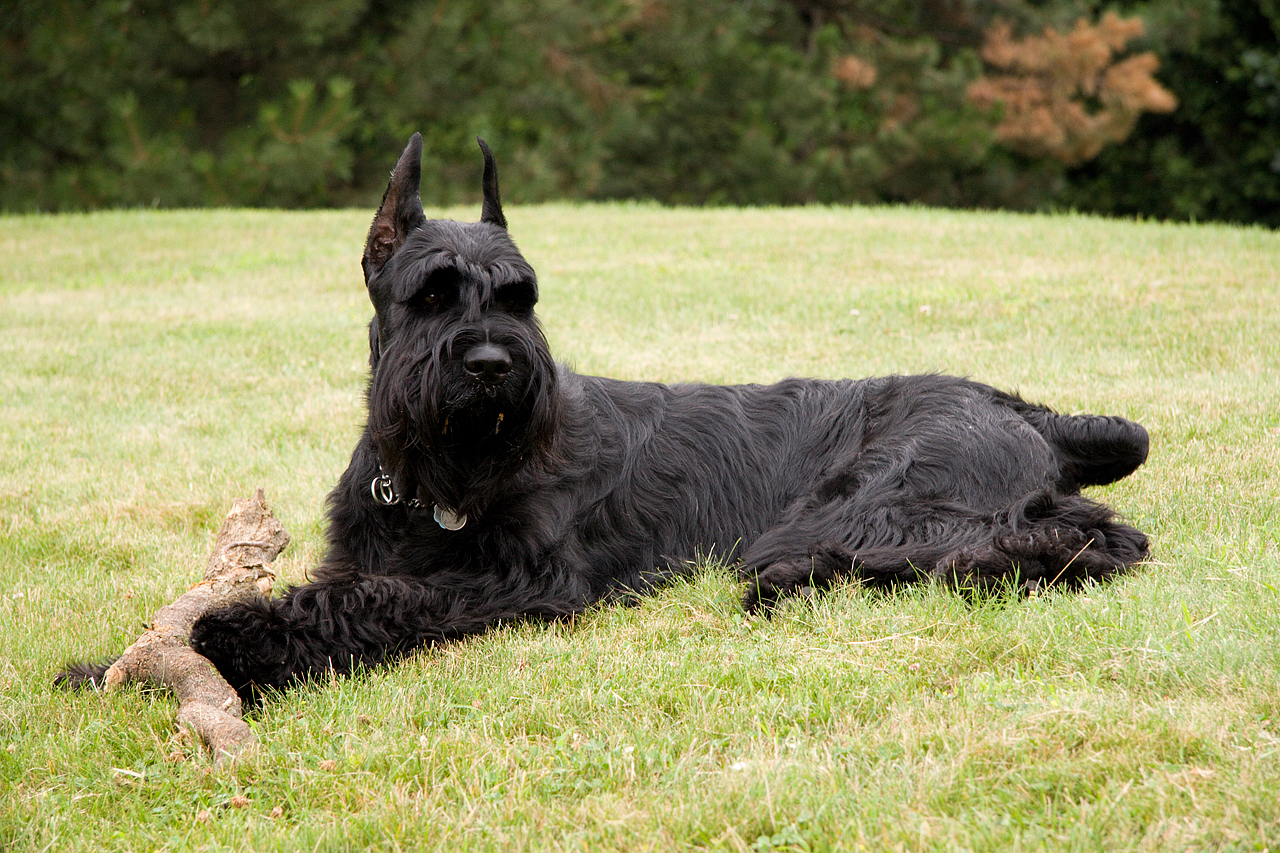
The Giant Schnauzer is the largest of the three Schnauzer breeds (Miniature, Standard, and Giant), developed in Bavaria and Württemberg, Germany, in the 17th century. Originally bred to drive cattle, guard breweries and farms, and later used as a police and military dog, the Giant Schnauzer was designed to be a larger, more powerful version of the Standard Schnauzer.
Breeders crossed Standard Schnauzers with Great Danes, Bouvier des Flandres, and other working breeds, resulting in a robust, alert, and dominant dog. By the early 1900s, the breed gained recognition in Germany for police and military service. The American Kennel Club (AKC) officially recognized the Giant Schnauzer in 1930, and it now belongs to the Working Group.
Although not as common as other working breeds, the Giant Schnauzer is increasingly appreciated by experienced dog owners, trainers, and law enforcement units. Its strength, loyalty, and intelligence make it ideal for those seeking a commanding companion or working partner.
The Giant Schnauzer is a large, squarely built dog with a distinctive beard and eyebrows, and a powerful, alert presence.
• Coat: Harsh, wiry, and dense with a soft undercoat. Requires regular hand-stripping or clipping.
• Color:
o Solid black or pepper and salt (gray with black tipping).
• Size:
o Height: 23.5–27.5 inches (60–70 cm)
o Weight: 60–95 lbs (27–43 kg)
• Head & Expression: Long, rectangular head with a strong muzzle, bushy eyebrows, and distinct beard.
• Ears: Set high—may be natural (V-shaped and dropped) or cropped and erect, depending on country.
• Tail: Typically docked (in some regions); when natural, it is medium length and carried high.
• Body: Muscular and robust—built for endurance, strength, and speed.
The Giant Schnauzer is a dominant, intelligent, and loyal breed, known for its working drive and protective instinct.
• Highly Intelligent: Quick learner, excels in obedience, protection, and scent work.
• Protective and Watchful: Natural guardian—very alert and suspicious of strangers.
• Loyal and Devoted: Bonds deeply with its family—fiercely loyal and affectionate.
• High-Energy and Driven: Needs regular physical and mental stimulation.
• Dominant Personality: Can be willful and assertive, especially without proper leadership.

This breed is ideal for owners who want a loyal, protective, and capable working dog with a commanding presence and keen mind.
• Excellent Protection Dog: Bred to guard and defend—naturally territorial and vigilant.
• Powerful Yet Trainable: Thrives with experienced handlers who offer clear structure and firm guidance.
• Energetic and Agile: Great for outdoor lifestyles, dog sports, or working roles.
• Striking Appearance: Signature beard, eyebrows, and build make the Giant Schnauzer stand out in any crowd.
• Devoted Family Member: Protective yet affectionate with those it trusts.
This breed requires active engagement, leadership, and routine care to thrive.
• Training:
o Must begin early—strong leadership and consistent training are non-negotiable.
o Thrives in obedience, tracking, protection, agility, and advanced dog sports.
• Exercise:
o Needs 90–120 minutes of physical and mental activity daily.
o Without stimulation, may become destructive or overbearing.
• Grooming:
o Brush 2–3 times weekly; hand-strip or clip coat every 6–8 weeks.
o Clean beard after meals and check ears regularly.
• Nutrition:
o High-quality, protein-rich diet suited for large, active breeds.
• Companionship:
o Requires close interaction with family—not a dog to leave alone in the backyard.

The Giant Schnauzer is generally robust, with a lifespan of 10–12 years. Health issues to watch for include:
• Hip and Elbow Dysplasia
• Bloat (gastric torsion)
• Hypothyroidism
• Progressive Retinal Atrophy (PRA)
• Autoimmune disorders (in rare lines)
Reputable breeders screen for genetic issues and prioritize sound temperament and structure.
Compared to the Doberman, the Giant Schnauzer is more rugged and less reactive, but equally intelligent. It is stronger and more dominant than the Standard Schnauzer, and more intense and demanding than the Labrador Retriever, making it a serious working dog suited to confident, experienced owners.
If you're seeking a powerful, loyal, and trainable guardian, the Giant Schnauzer could be your ideal breed. It excels in homes that offer consistent leadership, daily activity, and meaningful engagement.
Not recommended for novice owners or low-activity households.
United Pet Club provides tools and resources to support your journey with the Giant Schnauzer—from ethical breeder connections to advanced training guides. Bring home a dog that offers unshakable loyalty and unmatched ability when raised and trained with purpose.